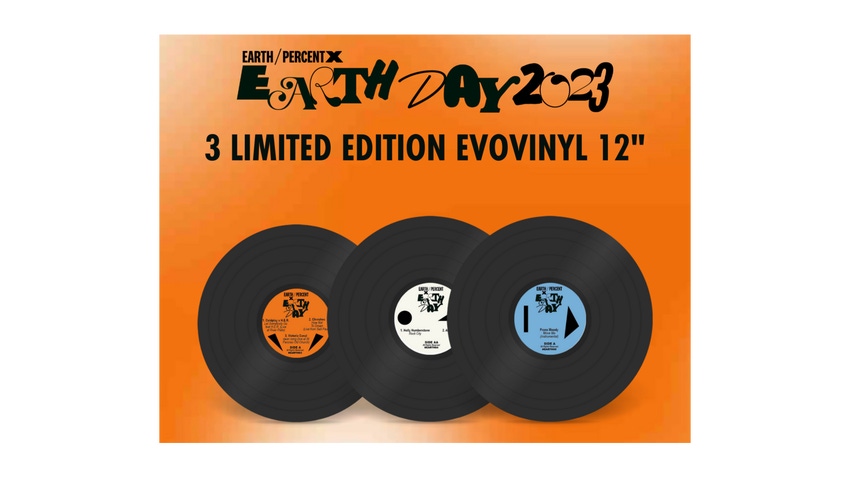This Earth Day Supporter Gave Us . . . Plastic
A famous and highly influential musician and producer who enlists music in the fight for climate causes presses records made from a plant-based plastic through his charity. So far, so good, until you read the fine print.
April 26, 2024

This past Monday was Earth Day, and this year it had an overtly polarizing theme — Planet vs. Plastics. It inspired some critiques — see Norbert Sparrow’s PlasticsToday column for an excellent set of thoughts — but even supporters of Earth Day, such as famed musician/producer Brian Eno didn’t toe the line. Eno has a UK charity, EarthPercent, that uses music to fight for climate causes and, shockingly, its contribution to Earth Day was plastic. Three record albums, in fact. Not traditional vinyl albums, but albums made with “Evovinyl” plastic.
Sound quality better than vinyl.
Evovinyl is a plant-based plastic used for making phonograph albums. It’s been around for a few years and seems to check all the boxes. It appears to work well with existing players and, more importantly, works well with record manufacturing equipment. One music reviewer that I was able to find was surprised by the quality of the sound, which — if I’m reading the esoteric description correctly — was better than vinyl. (I don’t claim to be an audiophile, just a lover of music that I love, so I will not opine on sound quality.)
I had to smile while reading about this, as we seem to have come full circle. Vinyl records didn’t become popular until after World War II. Prior to that, they were bio-based — Surprise! — mostly made from shellac. However, the bio-based chain doesn’t stop there. The molds used for pressing records are created from a “master” recording made in the studio. These masters need to be of the highest quality and are also bio-based, made with nitrocellulose.
Some side thoughts.
This does make me wonder about material selection for records. Nitrocellulose is clearly the best option for sound reproduction but it has a lot of serious problems, extreme flammability being just one. Vinyl was chosen as it was cheap and worked well, but is it really the “best” choice for sound reproduction, especially for an audiophile? What mechanical properties are needed to really get the stylus (needle) of a record player humming?
It’s established that heavier albums sound better, but I don’t think the material has been optimized. This is challenging, since you need access to record-pressing equipment. 3D-printing albums is not possible (at present), although I think you might be able to make one with a single or small set of tones.
Back in the groove.
The Evovinyl plastic is bio-based, but it does include “natural mineral binders and additives . . . ”. Natural mineral binders. That’s weird. Binders are normally polymeric materials added to hold things together (bind them). Mineral binders do exist (such as calcium oxide), but they need to react with water and give off a lot of heat, and I can’t imagine that happening in a record-pressing operation.
And then there are the “additives,” more specifically, “additives for color and for optimum flow rates.” Optimum flow rates? That sounds like a plasticizer to me, just like those added to vinyl. We are not told what they are and how much is added, but this could be the Achilles tendon for this product. As we know from vinyl, additives can cause a world of leaching problems and expose people to chemicals that they don’t like to be exposed to.
I’m happy that people still listen to music in a format that I grew up with. That round piece of vinyl has given us many expressions — sounding like a broken record, scratched record, drop the needle — that don’t divide the generations. That’s always a good thing, unlike dividing the world into Planet vs. Plastic.
About the Author(s)
You May Also Like




